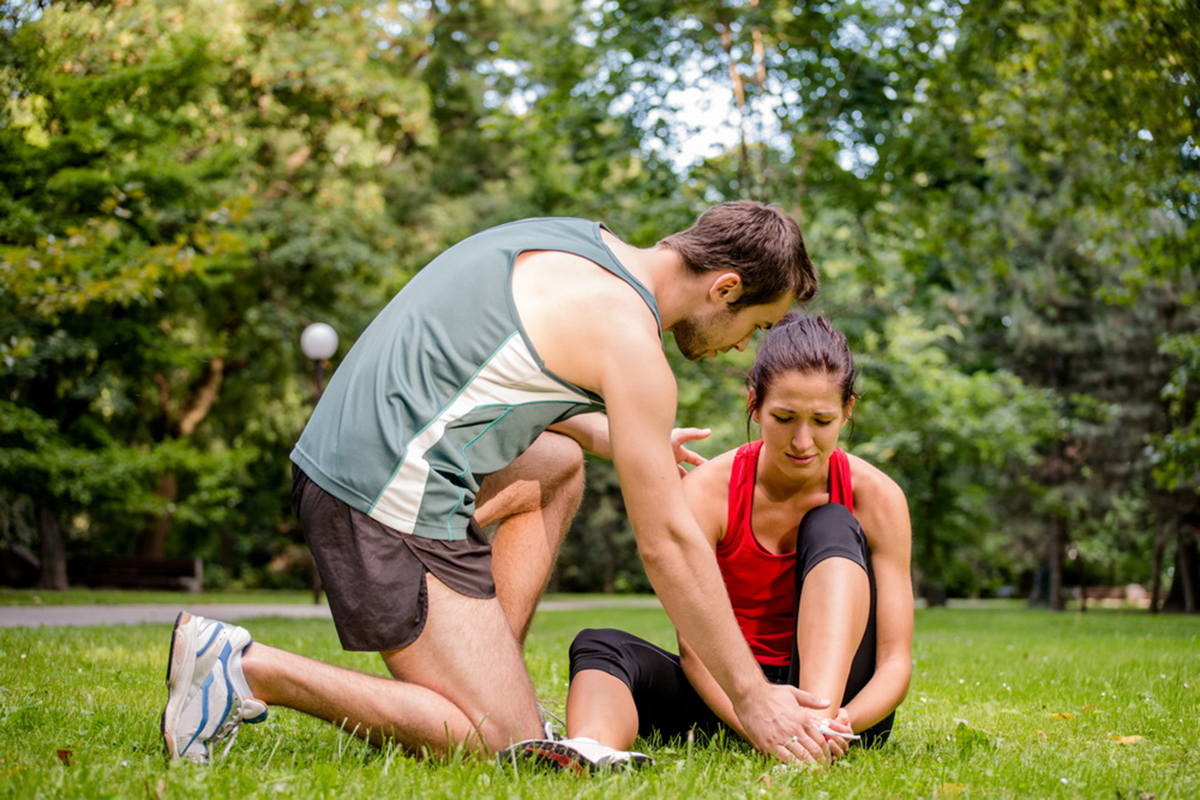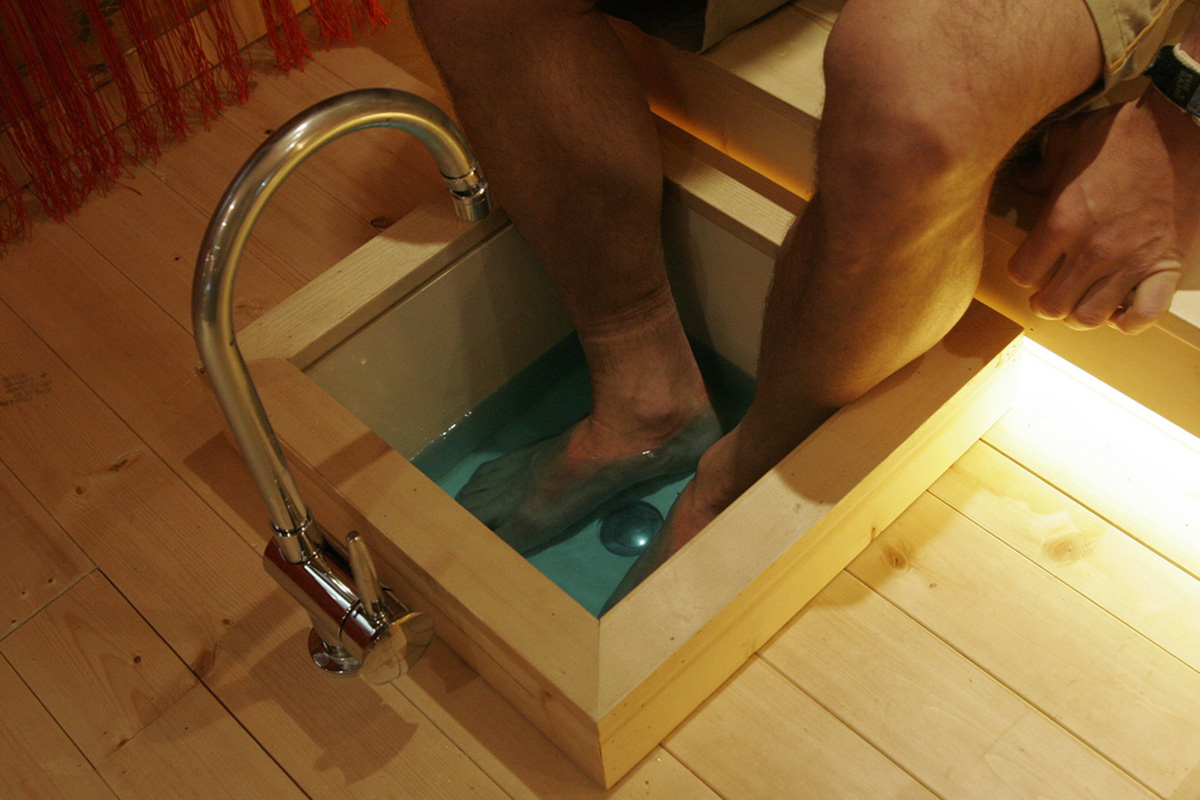About Tissue Damage
Whenever we undertake any exercise our muscles get damaged. Our muscles are made up of thousands of strands of muscle fibres that lay along side each other to form the muscle belly. When you exercise or put force through the muscle from running or lifting weights the muscle fibres get torn, sometimes only a few and other times lots of them. If there are a lot of muscle fibres torn then it can be extremely painful and there will be a lot of swelling. Bruising is likely to occur in the affected area as well so seek medical advice if bruising or swelling persists. Depending on the amount of torn fibres, depends on the severity of the injury, most often these "muscle pulls" can be treated at home with rest to give them time to repair.

Why Use Home Based Techniques?
If you pull a muscle it is not normally bad enough to seek medical attention, and usually seeing your GP will result in a simple go home and rest approach. The other alternative is to pay for physiotherapy treatment but with minor muscle damage the methods they would use are very similar to those in this article. So using some simple methods at home can save you time and money as none of these will cause any further damage and combined with an element of rest will see you back on the playing field quicker than rest alone.
R.I.C.E
See Also: Deep Tissue Massage Benefits and Side Effects
R stands for rest which seems obvious but it means not using that limb or part of the body that has been injured.
I stands for ice, you should make sure that especially the first 24 hours after pulling the muscle to ice it every 2-3 hours for about 20 minutes a time. Make sure not to place the ice pack directly onto the skin always wrap in a towel. Icing helps to relieve pain and decrease the swelling around the muscle.
C is for compression as it is important to keep the injury wrapped up using a compression bandage.
E is for elevation as the injured area should be elevated as much as possible to avoid excessive blood flow to the area which will lead to additional swelling.
Contrast Bathing
A simple method that can be used a few days after the initial injury is contrast bathing. If blood flow to the injured part is too high it causes irritation and excess swelling so we need to control that and promote healing. Before undertaking contrast bathing check a persons reaction to ice to make sure they do not have an adverse reaction. The idea behind contrast bathing is to alternate between an ice bath and a hot bath for the injured part. The ice is to restrict blood flow and try to decrease swelling and the heat is meant to force fresh nutrient rich blood to the injury to promote rapid healing.

- Dip the injured body part into ice bath for a few second
- Take out and dry
- Dip into warm bowl for a few seconds
- Take out and dry
Repeat this procedure 4-5 times or until you see a colour change in the skin and repeat three times a day to promote fast healing.
Massage
If the injury is still causing problems after 4-5 days then its possible that the repair could be leaving scar tissue or the damaged muscle fibres are not repairing inline. So getting a massage can help to promote blood flow and repair of the tissue. There are many methods of self massage if you can reach the injured muscle or using massage poles which you can roll over large muscles in the legs which work just as well as getting a professional massage.
Progressive Strengthening Exercises
Starting with gentle movements, they prevent stiffness and promote blood flow to injured areas. As healing progresses, resistance exercises reintroduce stress to damaged muscles, reinforcing tissue repair and rebuilding strength. Initially, low-resistance exercises like band stretches are advised. Over time, as pain subsides and functionality returns, weights and increased repetitions are introduced, following the principle of progressive overload.
Ensuring proper form is crucial to avoid re-injury. Regularly interspersed with rest days to facilitate recovery, this systematic approach to strengthening ensures optimal muscle healing and resilience against future injuries.
Ibuprofen and Rest
By far the best method to make sure you see a quick recovery is taken pain relief and getting plenty of rest. If you have a muscle pull it can take quite a long time before it is fully healed (depending on severity) but in most cases a week of rest will allow you to get back to exercise.
Ibuprofen and other anti inflammatory medications are essential when recovering from sports injuries as they will not only work as pain relief but they will also help to relieve swelling.
See Also: Tired Of Extreme Fatigue, Sleeplessness And Muscle Pain? Beat Your Catabolic State
Hydration and Nutrition
Proper hydration facilitates nutrient transportation to injured areas, aiding in the removal of waste products from tissue repair. Consuming adequate water can also prevent cramps, further minimizing muscle stress. Nutritionally, proteins are essential, supplying amino acids for muscle repair and rebuilding.
Omega-3 fatty acids from sources like fish aid in reducing inflammation, while antioxidants from fruits and vegetables combat oxidative stress associated with muscle injury. Vitamins like C and D, and minerals such as zinc and magnesium, support tissue regeneration. Together, optimal hydration and nutrition accelerate muscle recovery.
Overall, the above techniques will work to help get you back exercising after a muscle pull from overstretching. However make sure to judge each injury as an individual because sometimes they can need surgical repair (depending on severity). Most often after a week you should be able to exercise again if pain and swelling does not clear up within 5 days then seek medical advice, also if the injured part has significant swelling or is excessively hot to the touch.
Try out the techniques even just after training to boost your recovery time as muscle is always damaged after a big workout!
- Photo by shutterstock.com
- Photo courtesy of sellyourseoul by Flickr : www.flickr.com/photos/sellyourseoul/4270761868/


Your thoughts on this